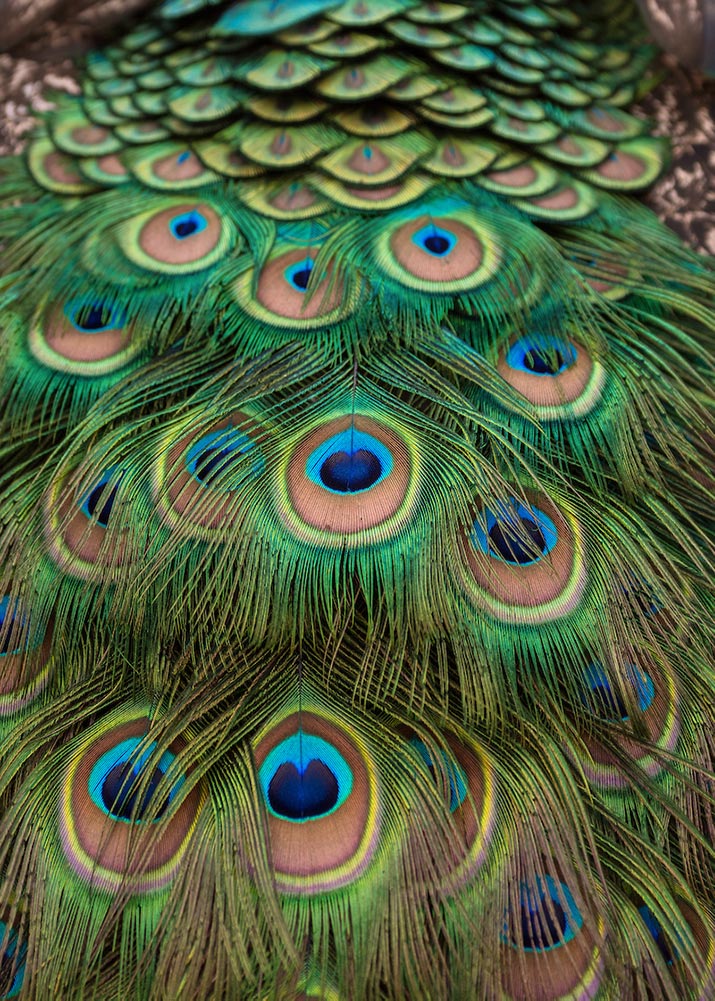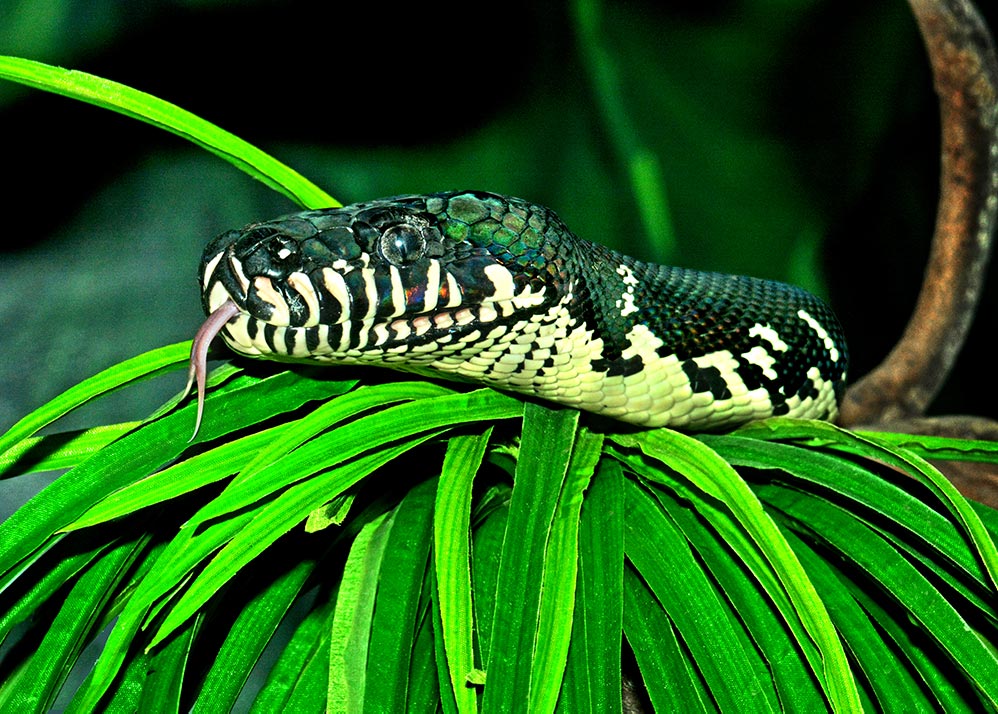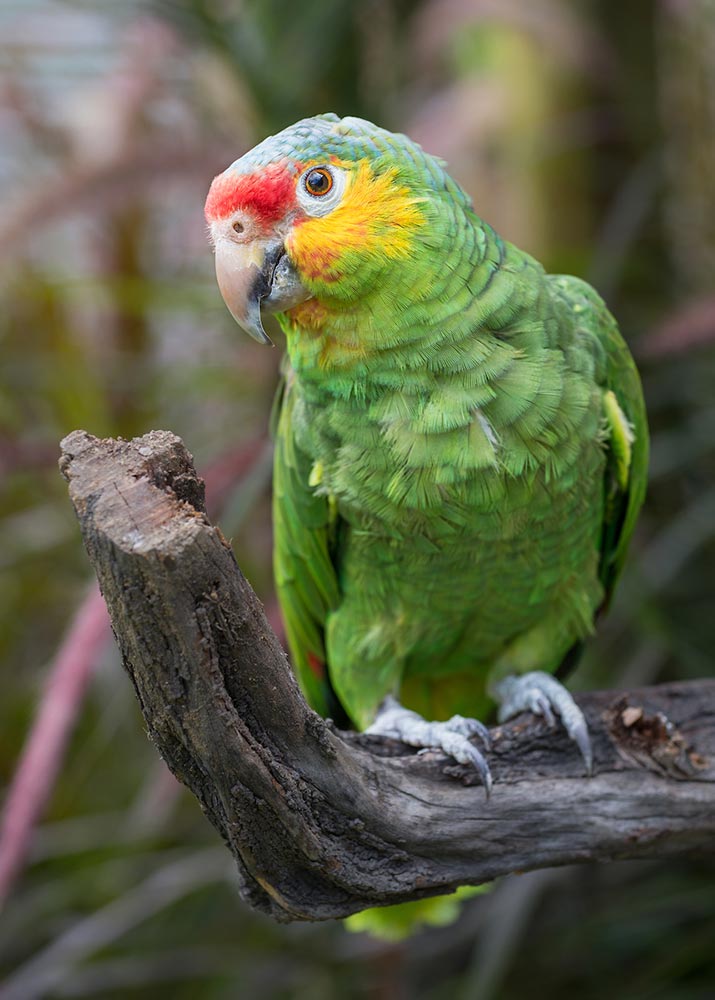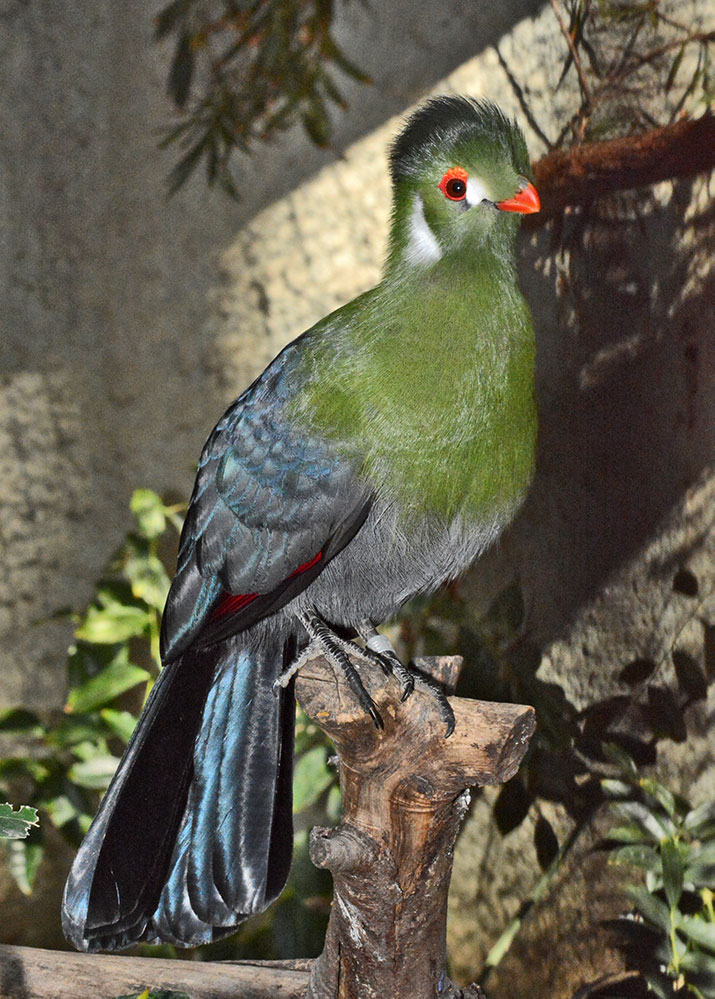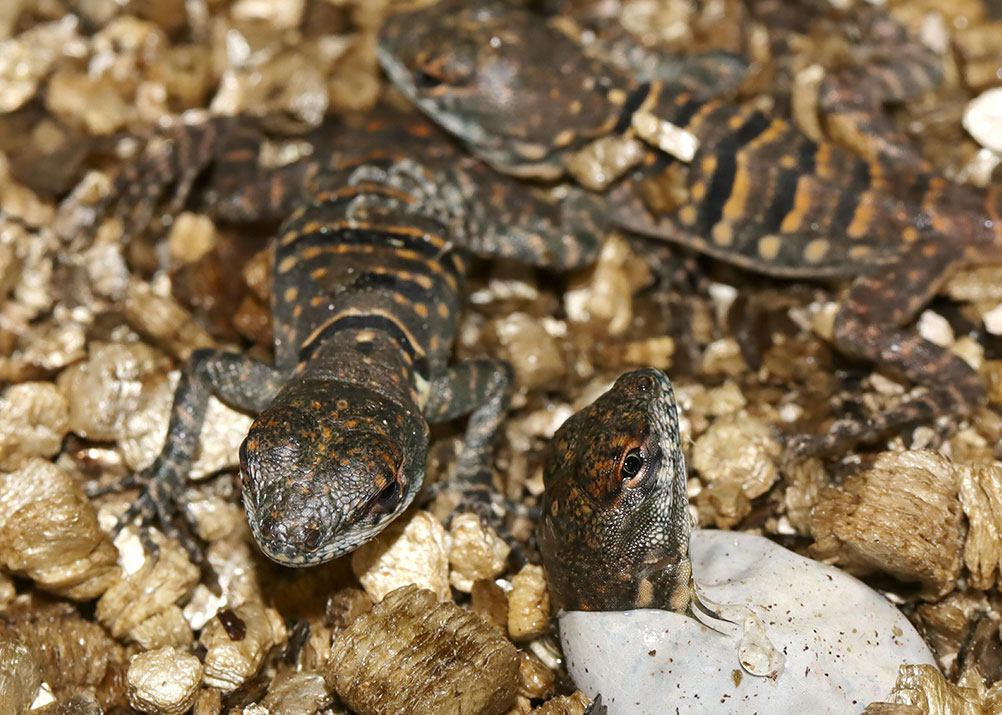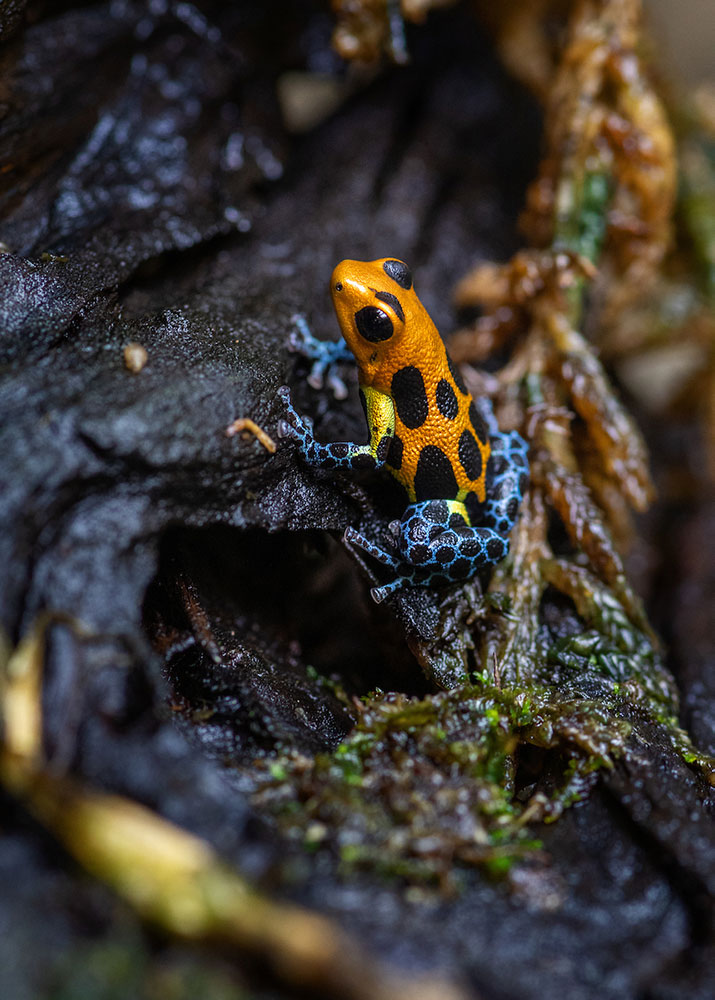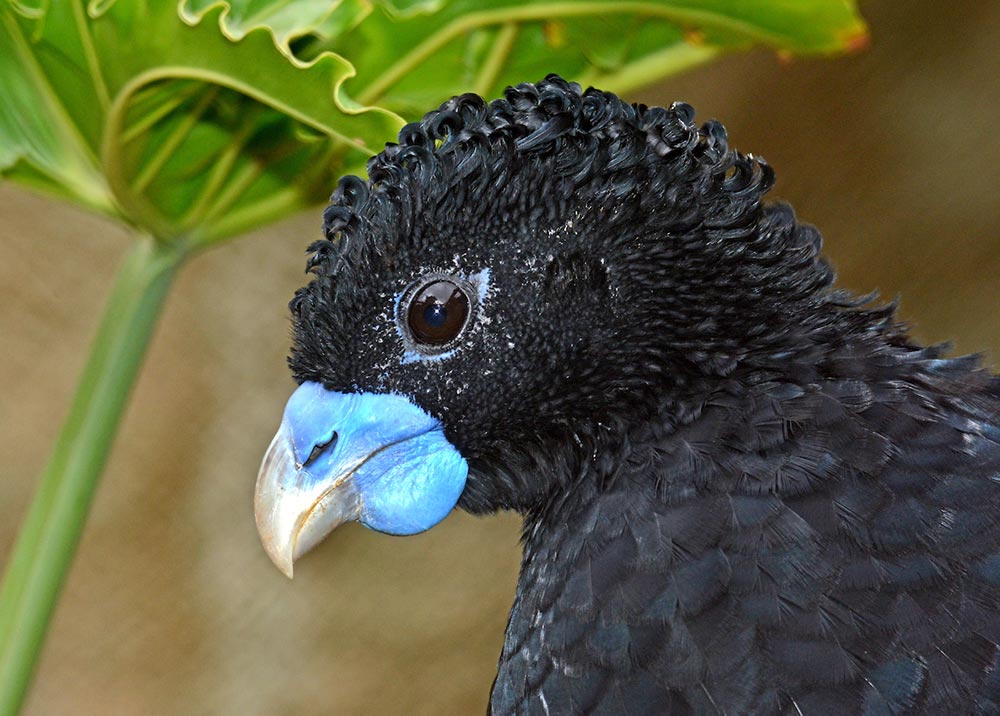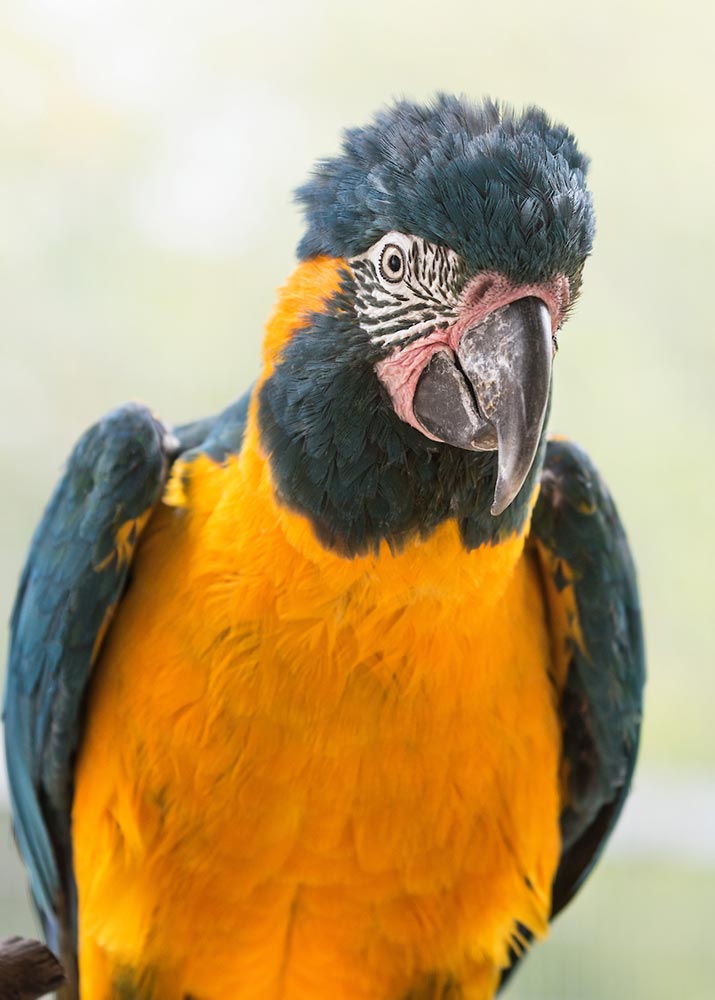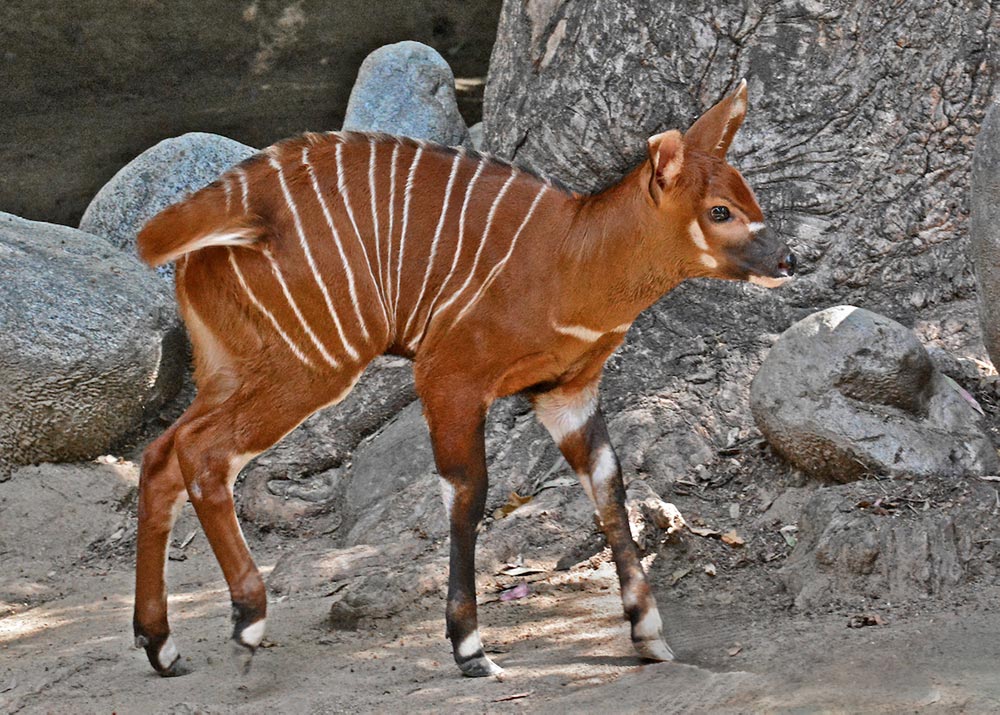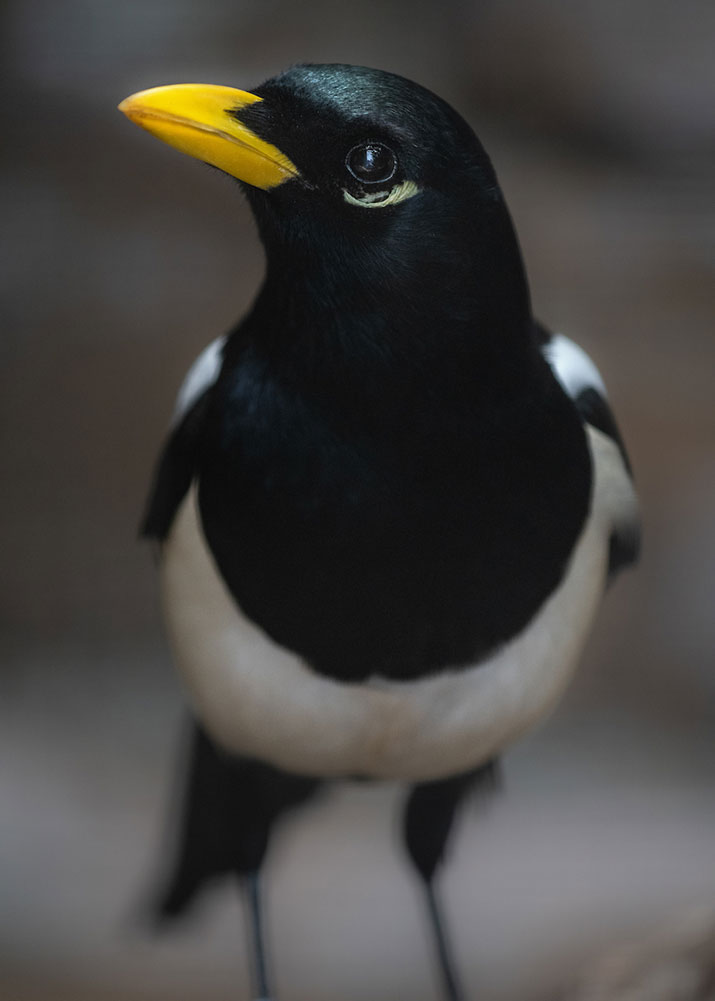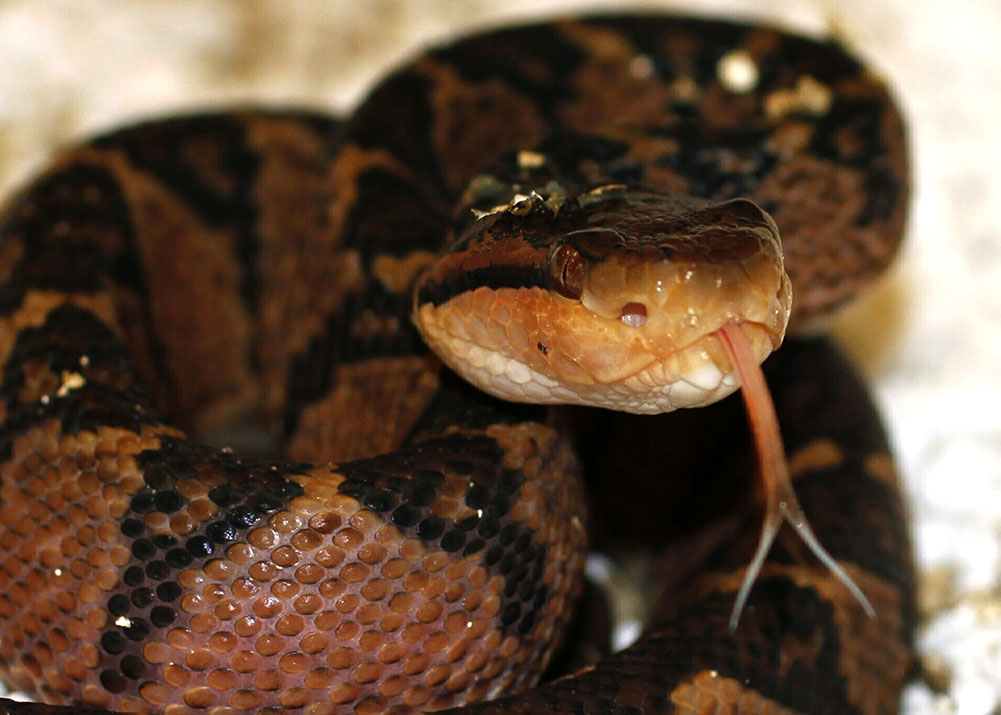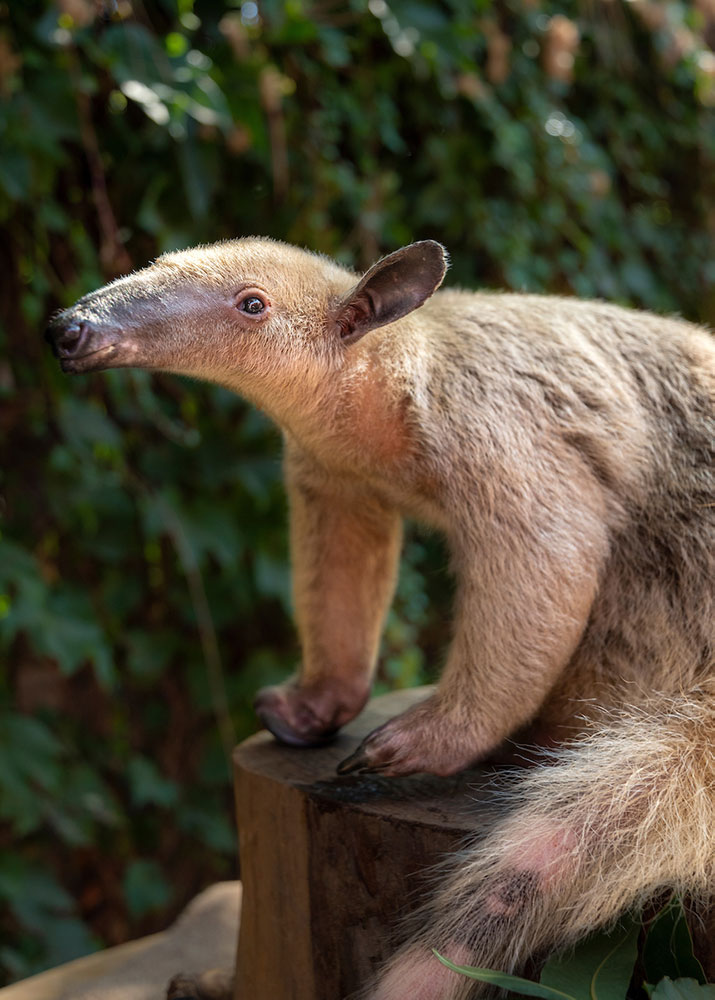New in the Zoo

Zoo Update with Denise Verret
July 31, 2019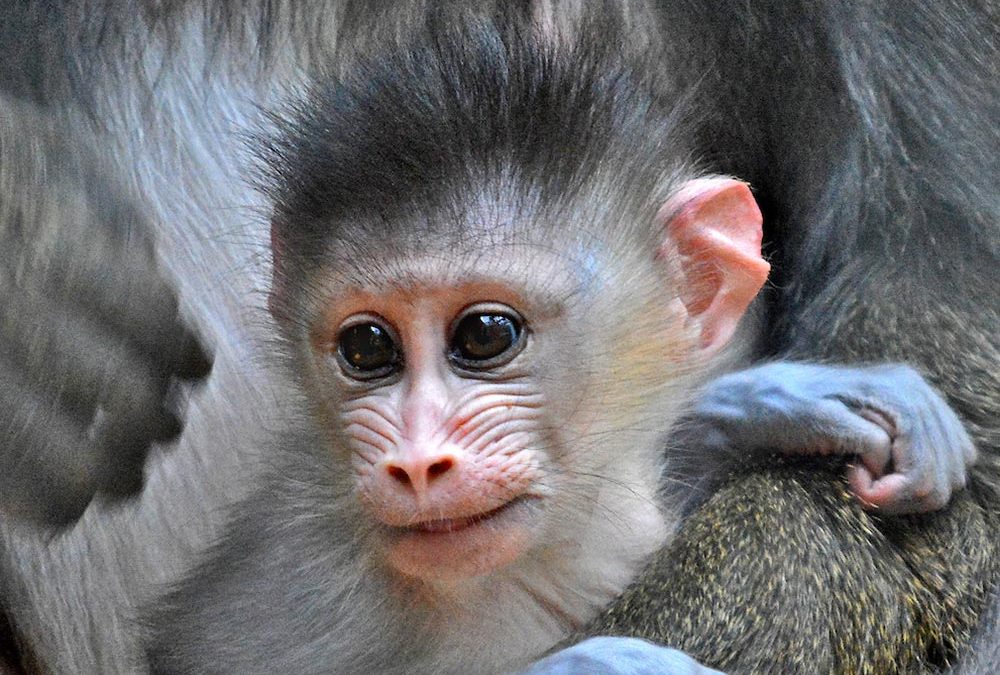
The new mandrill baby is the second for mother Juliette and the third offspring for father Jabari. She can be found with her parents in the Africa section of the Zoo. Photo by Tad Motoyama
Vision in the natural world is as diverse as the creatures in it. The range of visible light that humans can see is less than one percent of the whole electromagnetic spectrum, which includes gamma rays, radio waves, x-rays, infrared, and ultraviolet light. Other animals see broader or different ranges of light wavelengths. Rattlesnakes and other pit vipers have special receptors that enable them to detect infrared—the body heat of their prey. Many birds and insects are able to sense ultraviolet light.
We humans have excellent daytime vision and are able to perceive a rich array of colors. Like other primates as well as birds, we have receptors in our eyes that enable us to see red. (To animals who can’t see red, it appears as brownish-gray.) While many plants produce blue hues, very few animals and no vertebrates (animals with spines) do.
Pigment creates color by absorbing all but specific wavelengths of light. A red shirt looks red to us because the dyed fabric is reflecting only the red light and absorbing all the rest. Structural color is produced by refracting or bending light so that only a particular wavelength remains. The surface is colorless but covered with finely formed structures composed of collagen (the protein that makes your skin smooth and elastic) or keratin (the substance that makes up your hair and fingernails) that bend the light that strikes it. Peacock feathers are actually pigmented brown, but their surfaces bend light like a prism, resulting in the dazzling array of colors that we perceive. Pigment and structural color can work together, too. Green animals such as tree pythons or emerald boas and parrots actually produce a yellow pigment but have blue-refracting color structures on their scales and feathers that combine to produce green!
Other animals that exhibit this blue color phenomenon include the Baja blue rock lizard, mimic poison dart frogs, the blue-billed curassow, and the blue-throated macaw—all of these species are residents at the Zoo and produced babies in June!
A female mandrill was born on June 13. These Old World monkeys are native to parts of Nigeria, southern Cameroon, Gabon, Equatorial Guinea, and Congo. Adult mandrills develop strikingly colorful faces and posteriors, particularly the males. Though some of the markings appear blue, there is in fact no blue pigment in their skin. Like other primates, they have only brown, red, and yellow pigments. The blue is caused by an optical illusion. Fibers of collagen (a type of protein) in their skin are so orderly in structure, that they reflect a single wavelength of light: blue. If those fibers are spread apart, the blue fades.
A group of vampire crabs were born. These tiny crustaceans have an unusual reproductive cycle in that the babies do not go through a larval phase. With many crab species, the eggs hatch into free-swimming larvae called zoea that molt several times before reaching their adult form and venturing onto land. Vampire crabs go through their early developmental stages inside the eggs and hatch out as miniscule crabs that are almost impossible to see with the unaided eye.
The single male yellow-billed magpie in the Winnick Family Children’s Zoo now has two female companions. This is one of the few bird species that is truly endemic to California and is found in open oak woodlands, primarily in the Central Valley, the southern Coast Ranges, and the foothills of the Sierra Nevada. Hopefully this group will also produce offspring.
Two California condors in need of medical attention arrived in June. One was treated and returned to the wild on July 11; sadly, the other succumbed to lead toxicity despite the best efforts of Animal Care and Animal Health staff.
A female Ross’s turaco arrived from the Denver Zoo and a male South American bushmaster transferred from Fort Worth Zoo in Texas. The L.A. Zoo is one of the few zoos that exhibits the South American bushmaster and, significantly, that has successfully bred this species, which is part of a managed breeding program through the Association of Zoos and Aquariums (AZA).
Two female tamanduas (a type of South American anteater) arrived last year and have become popular members of the animal ambassador team. A male arrived in June, and, after he has had some time to settle into his new home in the Winnick Family Children’s Zoo, it’s hoped that he will breed with the females.
Learn more about structural color:
The Cornell Lab of Ornithology: Bird Academy
The Journal of Experimental Biology
National Geographic: First blue feathers found on a fossilized bird
ERRATA
In the July issue of ZOOSCAPE, the IUCN status for crested capuchins was incorrect. The article stated that they are "currently not endangered thanks to their wide distribution." They are in fact listed as Endangered on the IUCN Red List.


